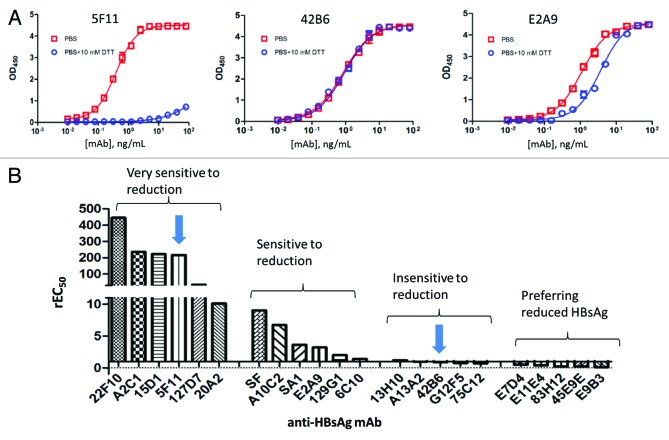Figure 3. The binding profiles of 3 representative monoclonal antibodies to HBsAg and the different levels of sensitivity to DTT treatment for different mAbs. (A) The primary ELISA binding profiles are shown for 3 mAbs (5F11, 42B6 and E2A9) with distinctively different binding properties to fully reduced HBsAg as compared to the control. (B) These mAbs were divided 4 different groups based on their relative EC50 values (derived from four parameter logistic fits) reflecting the degree of change in HBsAg binding activity to due to disulfide bond reduction in HBsAg. rEC50 ≈1.0 would indicate a mAb being insensitive for DTT treatment. Any significant change in Relative EC50 from 1.0 would indicate a significant change in binding affinities, reflecting conformational changes on HBsAg, probed by different mAbs. Two arrows indicate the 2 different mAbs (i.e., mAb 5F11 from Group I and mAb 42B6 from Group III) chosen for developing assays for different HBsAg antigenicity analyses. The mAbs preferring reduced HBsAg (in the last group) showed slightly higher binding activity to DTT-treated HBsAg as compared with the untreated HBsAg, likely recognizing linear epitopes.

An official website of the United States government
Here's how you know
Official websites use .gov
A
.gov website belongs to an official
government organization in the United States.
Secure .gov websites use HTTPS
A lock (
) or https:// means you've safely
connected to the .gov website. Share sensitive
information only on official, secure websites.
